
Nick Capozzoli is a video game critic and practicing architect, whose reviews have previously been featured on GameSpot. You can find him on twitter at @nickcapozzoli, and his reviews at nickcapozzoli.com.
I have the easiest “me at the beginning of 2016/me at the end of 2016” meme. I’d just put the usual portrait on one side, and in the other frame, a bunch of x-rays. It’s like I was collecting injuries to go with the year’s various insults. I’m literally limping to the finish here, y'all.
Jia Tolentino, reflecting on the year that spawned the meme, wrote that “It’s in the nature of years to feel exhausting in retrospect. The world is punishing; we have short collective memories and a cognitive bias that makes us recall bad events more vividly than good ones.” Maybe that makes an exercise like this one, where we all sift through the past year and pick out ten very good objects, all the more important. If only to apply a little jitter to the downward spiral that was 2016.
Too dark? I mean, I still have to talk about Inside...
10. Brigador
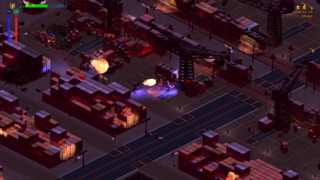
What’s the point of doing things with mechs, if you’re just going to have them perform the same semi-athletic acts the human body can do? If they’re just pulling triggers, hacking away with swords, or throwing clumsy haymakers, I’m probably out.
In the best mech fiction, the giant robots are a means, not an end. Their existence should be saying something about the world they’re in. Like how the synaptic superhumanity of the “frames” in Zone of the Enders lets you know that they’re a species on its way up, while mankind’s going into relegation. Or you could lean into the industrial horror of it all, like MissionForce: Cyberstorm. Brigador is one of the latter--the kind of game that sees you rolling in atop a towering pile of Mad Max detritus called “Treehouse,” and driving it through occupied buildings simply because they’re in your way.
Mechs, Brigador knows, are inherently absurd, ostentatious things, and any world in which people think it’s a prudent career move to invest in a giant personal killdozer is probably a nasty piece of work. Brigador takes that absurdity and channels it, naturally, into the darkly humorous. A typical briefing: “It is accurate to consider your participation in the present opportunity a heroic sacrifice, a tangible contribution to the restoration of rightful planetary self-governance.”
9. FIFA 17

Did I use “relegation” correctly, up there? I’m still learning the lingo. 2016 was the year I decided I’d get into fútbol. I put my fandom up to a twitter vote, I switched my Sunday TV viewing from the NFL to something called “Bundesliga,” and I bought a copy of FIFA 17.
FIFA sports a story mode this year, and I figured that was my inroad. These things always follow players on a trip from the bottom of the league to the top, so I expected “The Journey” to give me a nice tour of the sport. And that it does, pursuing its protagonist, Alex Hunter, across the customary narrative beats: battles for a roster spot, rivalries, cup games, and the like.
The Journey handles these moments competently (which is no small thing, as anyone who played NBA 2K16’s bizarre “Livin’ Da Dream” can tell you). But it didn’t truly grab me until it did something most sports games aren’t willing to do: ripping Hunter from my team of choice and sending him off on loan. The move, which is portrayed as a professional setback, puts Hunter on the same team as his former bully, Williams. But with a shared purpose and at the fringes of relevance, the antagonist becomes a friend, and a new, stronger kind of pride forms. The narrative footwork sets up what’s subtly one of my favorite moments in a game this year. Not ten seconds after that cutscene, my Hunter and Williams teamed up for a wild, fumbling goal that was more meaningful than any touchdown or dunk I’ve made elsewhere.
8. Spaceplan
Play it on a lark. Play it even if, like me, you tend to regard the whole genre of “clicker” games with a kind of bemused horror. Play it even if you don’t think it’s a game--you dreadful bore--and be sure to stay for the ending.
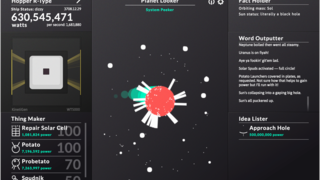
At the start of Spaceplan, you wake up trapped aboard a mysterious ship, in the orbit of a mysterious planet. As your A.I. assistant helpfully notes, you’re going to need to jerry-rig some equipment if you’re going to survive, let alone figure out what happened. But the only thing you have are potatoes. A lot of potatoes. God, so many potatoes. It’s like a lunatic version of The Martian--you’re going to have to pseudo-science the shit out of things.
Spaceplan takes the language NASA sometimes uses to author twee Twitter updates from the perspective of its satellites (“Ship status: lonely”), and augments it with a comic literalness. Your thing that makes things is called a “Thing Maker". The one that lists potential ideas is the “Idea Lister”, and words are output at…well, you get the idea. Don’t sweat the details, Spaceplan seems to say. Just keep clicking (or don’t, after you’ve launched a few energy-gathering potato probes), and things will eventually sort themselves out.
At some point, space being space, the scales you're working with start getting suitably mad. When you sink your first “Tater Tower” into the red crust of the planet, tell me the whole thing doesn’t instantly become a lollipop, dotted with the vanilla sprinkles of a few hundred crashed probes. On a plot measuring the game’s exponentially increasing nonsense over time, that part’s only the subtle beginning of the upturn.
7. Concrete Jungle
Concrete Jungle technically came out in 2015, but I didn’t cotton onto it until its mobile port released this year. (I know these Giant Bomb duders are nothing if not sticklers for the rules when it comes to these lists).
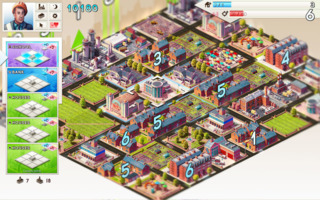
Deck-building games are usually a tough sell for me. I think something about the idea of a video game built around the use of cards strikes me as unpleasantly anachronistic, like how I used to have to use a cassette tape converter to play the songs off my iPod in my old Chevy Lumina. In Concrete Jungle, though, the cards correspond to buildings, farmland, and parks, and when played they contribute to a shifting topographical layer. The characters--mayors, architects, CEOs--all have their own proficiencies, and in versus mode, those neatly translate to competing visions for the city.
If an opponent stamps their mark on a given column with some mansions or luxury apartments, then it’s in your best interest to go ahead and tank the value of the land beneath the buildings (and by extension, their score) by plopping a bunch of factories and chemical plants around them. The grodier the better. It’s competitive NIMBY, and in 2016, a bit of wish fulfillment--give me a toxic landfill, please, and I’ll sit it right next to Trump National Golf Course.
6. Overwatch

It’s impeccably polished. Sure. Fine. But polish alone doesn’t get you Overwatch’s weird, beautiful, sometimes kind of creepy community following. I put a lot of weight on the kind of community a game engenders. Each informs the other, to the degree that I rarely find it valuable to consider either side separately. Overwatch’s fandom brings an earnest enthusiasm that’s perhaps only rivaled by Dark Souls.
Why are the characters so fun to riff on? For the same reason Overwatch is fun to play. It's the diversity, I think--and not just in the game’s portrayals, but as a complete design ethos. I’m reminded of a quote by the great philosopher Jean-Baptiste Emanuel Zorg: “Look at all these little things! So busy now! Notice how each one is useful. A lovely ballet ensues, so full of form and color.”
5. Diaries of a Spaceport Janitor

Adventurers wield powerful weapons, amass great hoards of stuff, and go on epic, world-saving quests at the far reaches of the galaxy. You do not do these things. You watch, you vainly window shop, you regularly go hungry. Also you collect trash.
There’s almost certainly a message here about life on the margins, particularly when you add in Diaries’ gender-remixing mechanic. But there's also this: most fantasy game towns are like Western movie sets with false fronts, staged solely for the player's benefit. Diaries’ city is infinitely more compelling than the lot of 'em, simply by virtue of being totally aloof. There are items you’ll never afford, conversations and customs you can't understand, and lofty views you'll never have access to. There's depth in that, and for my money that's more valuable than having dozen “favorite stores on the Citadel”.
4. Devil Daggers
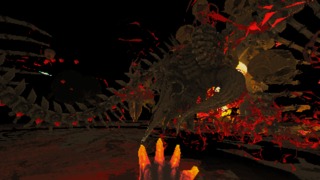
It’s a nightmare in two ways. One, because okay, yeah, there are all these keening skulls and tentacle beasts homing in on you from the corners of your vision (or worse: just outside it). And two, because I’m kind of terrible at it. I’ve survived for a full minute like maybe once.
Not that every run at Devil Daggers isn’t ultimately doomed. You can’t beat the game. But I don’t imagine better players feel as acutely aware as I do that from the first second, they’re losing control of things. That’s a primal sort of horror: the stuff of those dreams where you can’t outrun a pursuing monster, or suddenly realize that you’re back in high school, and also whoops you’re naked.
3. Duskers
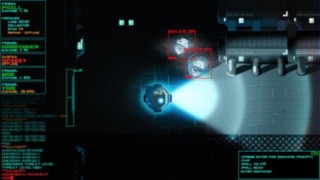
I’ve sort of fallen into the habit of talking about my Duskers drones like I’m an engineer in a Neal Stephenson book, which I’m very conflicted about. I named my first three Squib, Nerd, and Cheeto. Cheeto mans the generators. Nerd, ironically, does all the heavy lifting. Squib is my special little guy, and he gets to carry the Gather, Interface, and Motion tools.
Speaking of “interfaces,” actually. You could call Duskers “User Interface porn”--and there's definitely something kind of fetishistic about the way it imitates Alien--but that belies the Spartan economy of the thing. When UIs ring false in movies, it's often a matter of having too many bells and whistles. Duskers brings you into its setting by doing just the opposite. You're sitting at (what feels like) its terminal, working with (what feels like) a one-to-one version of the drone software, watching your best laid plans go (what feels like) a realistic sort of wrong.
2. Inside

There's a grisly death hiding somewhere in every artfully composed frame of Inside, like an anamorphic memento mori, there to reify the idea that your character's continued survival is improbable. Crazy improbable. Each time the boy is mauled by dogs, exploded, strangled, or shot, the pleasant fiction that he's managing to get through this gauntlet seems less and less canonical.
Somewhere in the black box of the game’s code, though, something is helping you through. It greases the wheels, adds just enough mechanical “tilt” to make navigating obstacles and manipulating objects preternaturally easy with just a single button.
But it's a devil's deal, because this is the rare game in which I don't actually really want to progress. There's this scene in Children of Men where the main characters enter an internment camp by prison bus. The camera looks out the window, so that the scene side-scrolls past, revealing a progressive sequence of horror in the background. Inside is a whole freaking game of that.
@manbearcar hole 64,465. 182,583 shots taken. We have reached... the end of desert golf. Ocean from here on out. Fin pic.twitter.com/uPFV3h1xYk
— Alden (@AldenLudwick) August 20, 2016
Note: This is not a screencap of the ending of Inside, but close enough.
1. VA-11 Hall-A: A Cyberpunk Bartender Action
This is the game for my moment. A cyberpunk dystopia wherein a whole lot of characters are drinking, as I myself recently replied to a doctor, “closer to ‘every day’ than to socially.” VA-11 Hall-A bar and its patrons are like an anime-kitsch version of "Boulevard of Broken Dreams", itself a kitsch version of Edward Hopper’s Nighthawks.
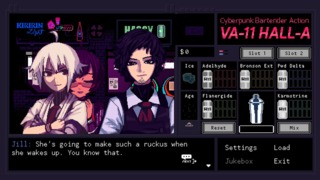
In Rosie Schaap’s little savoir-faire, “How to Read a Bar,” she recommends that you “consider its inventory” when ordering. What do you do, then, when every single drink (even the beer!) is a combination of the same five space-age ingredients? At VA-11 Hall-A, you’ve got Adelhyde, Flanergide, Powdered Delta, Bronson Extract (I’m not sure I want to know where they get that one), and Karmotrine, the universal alcoholic component. And that's it, more or less, so clearly no one's coming here for the mixology. But they keep coming back, all the same.
It’s the same way for the game, if you try to read it. You consider its inventory: a simple little drag & drop interface, a bunch of affable drunks, a jukebox full of gurgling synth. As games go, maybe that’s the equivalent of a “beer and a shot” kind of dive, but I find myself unwinding there a lot--keeping its window open while I write, popping in every now again to throw a drink together. It’s all in the atmosphere, really. Comfortable, low pressure... somewhere you can have an actual conversation, you know? Without it always inevitably swinging back to how you need to go on a mission or slay a demon or something.



